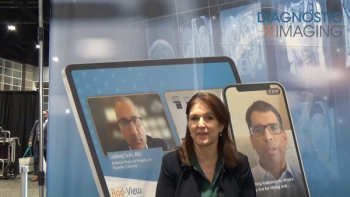
Acuson marketing resignations fuel acquisition speculation
Three key marketing people have left Mountain View, CA-based ultrasound manufacturer Acuson within the last month, further fueling speculation that the company is ripe for acquisition.Nancy Keuch-Rosa, 45, marketing director for Acuson’s PACS
Three key marketing people have left Mountain View, CA-based ultrasound manufacturer Acuson within the last month, further fueling speculation that the company is ripe for acquisition.
Nancy Keuch-Rosa, 45, marketing director for Acusons PACS segment, was employed by the company for seven years. Laurie Hallwyler, 47, a vice president of corporate communications, had been at Acuson for five years, while her assistant, Brooke Decker, 28, senior public relations specialist, had been with the company four years.
The most surprising departure to industry members was that of Hallwyler, who was promoted to vice president of corporate communications at the end of March, only about three weeks before she resigned.
Hallwyler was promoted at the same time Acuson promoted William J. Carrano to vice president of worldwide marketing. He was previously director of worldwide marketing for both the cardiology and general imaging ultrasound product lines.
The offer to become vice president of corporate communications for Netro, a pre-IPO broadband wireless company, wasnt even on the horizon when she accepted the Acuson promotion, Hallwyler said.
Hallwyler said she left the company for an opportunity to learn more about radio-frequency technology and to devise corporate communications strategies from scratch with a new firm.
She will continue to work for Acuson on a contract basis until the middle of May. Before joining Acuson, Hallwyler handled the companys account at a public relations agency, where she was vice president of the healthcare division.
Decker was enticed away by Cisco Systems. Keuch-Rosa will continue to consult for Acuson while spending more time with her family, Hallwyler said.
The trios departure is the latest in a series of personnel switches at Acuson. Former president Daniel Dugan resigned March 1, while former Acuson president Robert Gallagher came out of retirement to resume his duties as president and chief operating officer. He will remain in this position until sometime in June, when a permanent replacement for Dugan will be named. Dugans departure appeared unrelated to the companys financial performance (SCAN 3/1/00).
However, Acusons financial results for the first quarter of 2000 (end April 1) will be lower than company officials and analysts had predicted.
Revenue is expected to be somewhere between $110 million and $112 million, which will result in earnings of 5¢ to 7¢ per share. This is below expectations of 11¢ to 12¢ earnings per share. Final results will be posted this week.
Chief executive officer Sam Maslak blamed the low earnings on later-than-expected receipts from base platform ultrasound orders. In addition, the company reported lower-than-expected revenue for the KinetDx Ultrasound PACS solution, the product Keuch-Rosa helped market.
Maslak said in the companys first quarter report that although customer response has been positive to the KinetDx Ultrasound PACS solution, the company underestimated the time and resources necessary to ramp-up the product. However, Acuson said orders were strong for the Cypress, a new ultrasound system displayed at this months American Institute of Ultrasound in Medicine meeting.
In recent years, Acusons sales environment has been radically altered as many of its independent competitors have been acquired by multimodality medical vendors. For example, Philips Medical Systems acquired Acusons archrival ATL two years ago.
Acuson has also made some logistical changes, including moving the manufacturing of its systems to Mexico last year.
Acuson isnt the only healthcare company that has had a hard time keeping employees from fleeing to attractive start-ups, said Jack Cumming, a healthcare industry analyst who heads HealthCare Markets Group.
At press time, Acusons stock was $12.44 per share. Last year at this time it was $15.50 per share. It peaked at $40 per share in the early 1990s.
(Employees) look at a companys performance over the last couple of years, and they have to ask themselves, What is it that is keeping me at this company? Cumming said.
Acuson has a strong, solid history in ultrasound, but in light of frequent personnel switches and current stock reports, there may be some changes in the companys future, analysts say.
Acuson has had an opportunity to grow the company via acquisitions, which they have chosen not to do. That has hurt them, Cumming said.
With revenue of $476 million last year, Acuson was sitting on $157 million in cash, he noted.
I think they should be a prime candidate for an acquisition, he said.
Hallwyler denied that she has heard anything about an acquisition. She said Acusons financial picture has nothing to do with her leaving, she said.
Newsletter
Stay at the forefront of radiology with the Diagnostic Imaging newsletter, delivering the latest news, clinical insights, and imaging advancements for today’s radiologists.




























